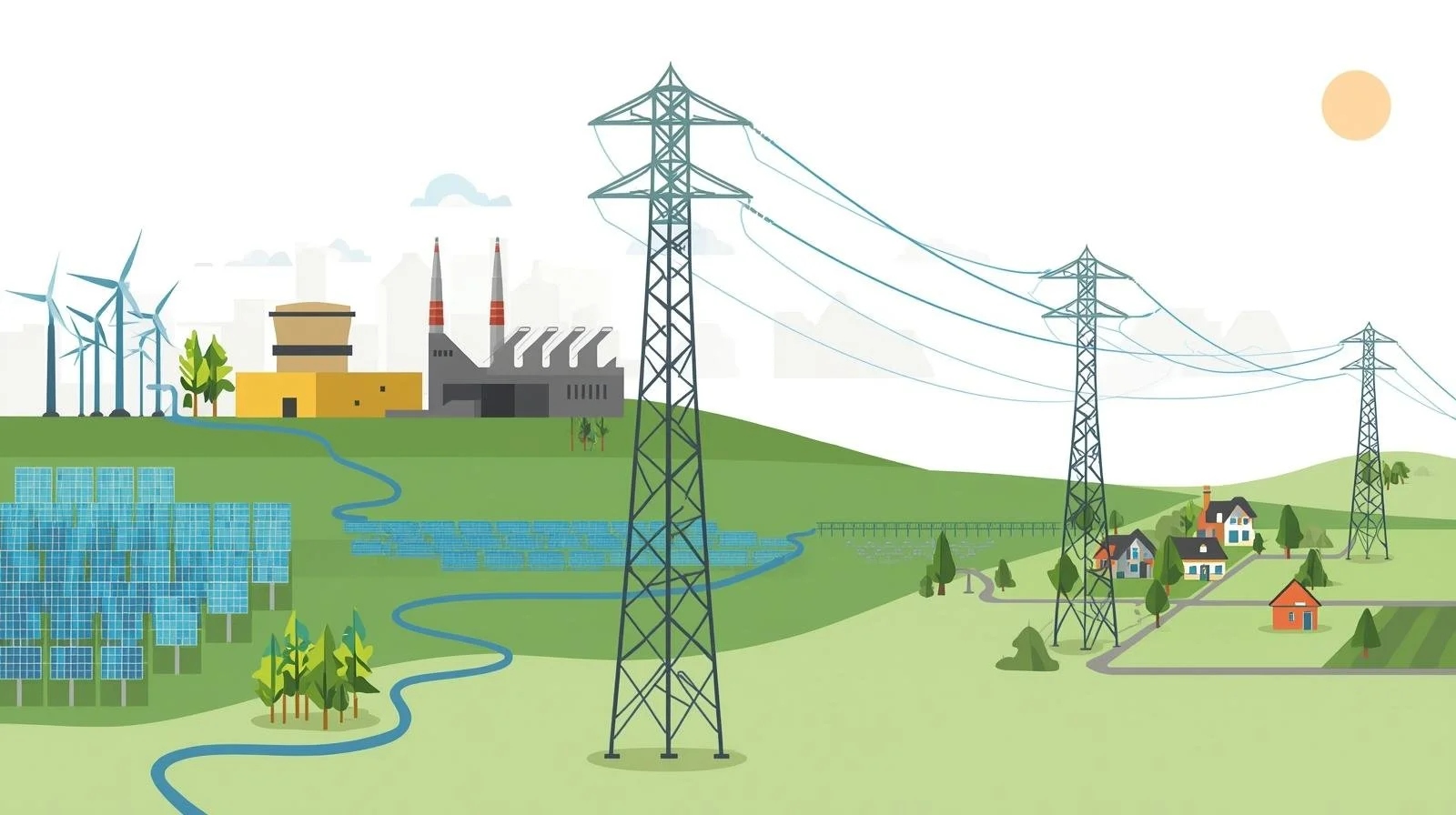Deep Dive # 5: What environmental claims can your business make?
Overview: Community Solar partnerships let organizations support local renewable energy projects, but subscribers usually cannot claim they are directly using clean energy because utilities often retain the Renewable Energy Certificates (RECs). In select markets like Illinois, Colorado and a handful of others, businesses may access projects that transfer RECs to subscribers, creating opportunities to both save money and advance environmental goals.
One key benefit of a community solar partnership is being able to say you’re supporting a local renewable energy project and a cleaner grid. But does that mean your facility is actually using clean energy? To answer that, we first need to look at how the grid works and the processes for claiming renewable energy use.
The electric grid is a complex system that moves power from generators (solar, wind, coal, natural gas, nuclear, etc.) to consumers through transmission and distribution lines. To operate smoothly, all energy created by those generators must meet the same standards to travel through the power lines, making it impossible to distinguish whether the electricity you use comes from renewable or nonrenewable sources when consuming energy from the grid.
Figure 1: Overview of the electric grid, highlighting how energy sources become indistinguishable from one another once electrons are sent to the grid.
Think of electricity like water. If several water treatment plants pump into a single reservoir that your town uses for consumption, you won’t be able to tell which plant your water came from when you use it. It’s all mixed and uniform. The grid works the same way: once electrons are on it, their source can’t be traced. So how can companies claim to use clean energy without an on-site solar farm? That’s where Renewable Energy Certificates (RECs) come in.
A Renewable Energy Certificate (or REC) is a transferrable document that is associated with every unit of clean energy generated by a renewable energy asset. By receiving these certificates and being connected to the same grid, the recipient of a REC can claim that they were the sole consumer of a unit of clean energy generated elsewhere in the grid.
So with the understanding that RECs exist, do subscribers to community solar projects receive the RECs from a project? The answer is typically no. The reason being: in most instances when a community solar program is being developed, the local electric utilities refrain from providing their support for the program’s existence unless they can claim the REC themselves, where this default scenario allows for an electric utility to make progress towards their Renewable Portfolio Standard requirements and avoid financial damages for non-compliance. As a result, this means that while subscribers will be able to claim they are partnered with a clean energy project, they will not be able to state they are using clean energy from that project.
There are some instances in specific markets like Illinois or Colorado where a large-scale business may be able to seek out certain types of projects that will have the RECs available for claim by the subscriber and not the utility. If this is something of interest for your organization, reach out to Turquoise Trail Energy Solutions to set up time to discuss those needs and talk about potential pathways for helping your organization save money and make progress towards your environmental goals.

